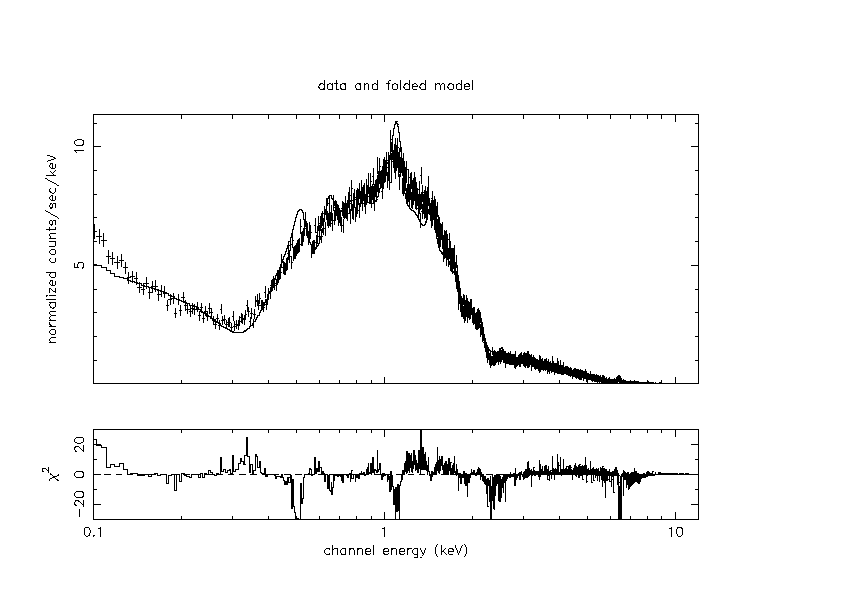
The EPIC MOS spectrum of A2199 in the above plot is based on an input model generated in xspec, based on the results of earlier ROSAT observations, folded through the EPIC RMF. The basic characteristics of the input spectrum are kT = 4.5 keV, NH = 0.1x10E20 cm², 0.3 Solar metallicity and a normalization according to the observed flux in the ROSAT band. One obtains the spectrum displayed as a histogram as the result of feeding the unfolded model spectrum into SciSim. The discrepancies between model and simulated data are thus a measure of the inaccuracies of the preliminary characterization of XMM-Newton in the SciSim software.
Several emission lines, like for example of O, Fe L, Ne, Si (and also Fe K alpha at 6.4 keV, are visible in the plot. Their properties (absolute and relative strength, width and redshift) are the most important diagnostics for detailed studies of the intracluster medium (ICM).
What we show here is a total spectrum. Using the EPIC cameras, one will also be able to study the spatial variation of the above mentioned line parameters and derived physical quantities throughout the ICM.
The RGS will allow for high-resolution spectroscopy of the central cooling flow, if spatially not too extended (< ca. 1'), thus complementing the non-dispersive EPIC spectroscopy. In principle, the RGS offers a spectral resolution superior to that of EPIC for even more extended sources. However, it will probably be very difficult to obtain reliably calibrated spectra for sources with an extent that comes close to the size of the RGS CCD chips (5' across in the cross-dispersion direction).
Plot and simulation by H. Siddiqui, XMM-Newton SOC (VILSPA).
[last update: 24 Sep 1998 by M. Dahlem]
Return to Science with XMM-Newton page



